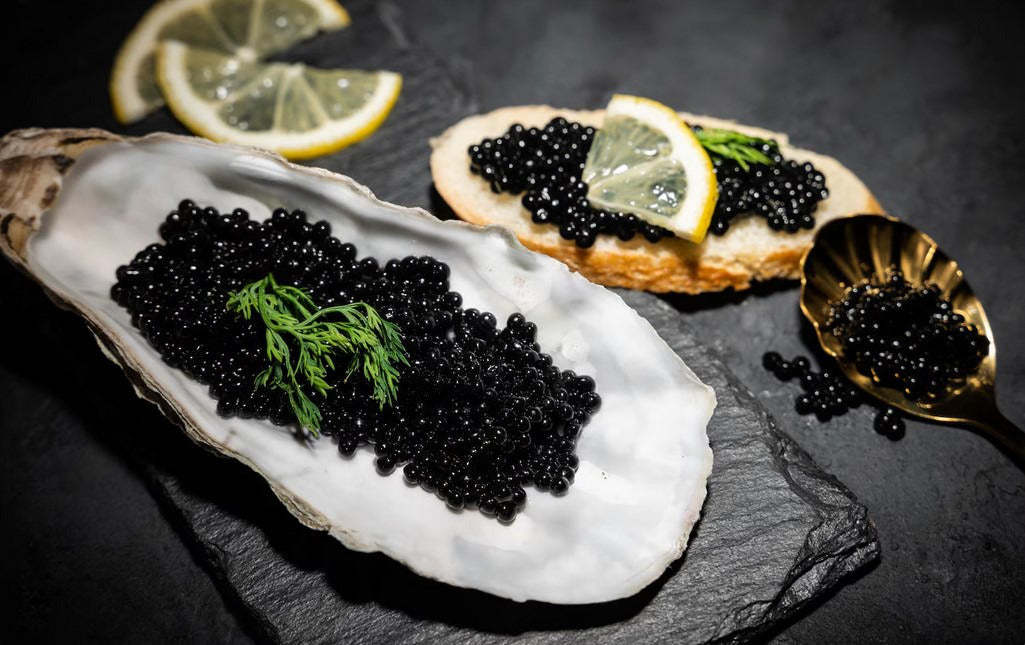
Caviar has long been celebrated as the ultimate luxury in gastronomy, an indulgence reserved for those who savor refined flavors and exquisite textures. Its glistening pearls and umami-rich taste elevate any dining experience. In contrast, masago — small, vibrant fish eggs commonly used in Japanese cuisine — has become increasingly popular for home cooks and casual dining enthusiasts. But how do these two types of roe compare? And importantly, is masago caviar, or is it simply a budget-friendly option? In this article, we’ll explore masago vs. caviar, looking at their flavors, textures, culinary roles, and overall value.
What Is Caviar?
Caviar refers specifically to the salted roe of sturgeon species. It is considered a pinnacle of luxury in the culinary world, prized for its rich, buttery flavor and delicate pearls. Among the most renowned types is ossetra caviar, which offers a nutty, smooth taste with medium-sized eggs that are neither too bold nor too subtle. Other classic varieties include Beluga, Sevruga, and modern hybrid sturgeon caviars, which combine tradition with sustainable farming practices.
The texture of caviar is a defining characteristic — it is soft and buttery, yet the eggs retain a subtle “pop” that releases concentrated flavor with each bite. Traditionally, caviar is enjoyed on its own or paired with minimal accompaniments such as blinis, toast points, or crème fraîche, allowing the roe to shine.
Producing caviar is labor-intensive. Sturgeons may take many years to mature, sometimes decades, and harvesting the eggs requires precision to maintain quality. The roe is then carefully cured, graded, and packaged to ensure freshness. This meticulous process contributes to caviar’s high price and prestigious reputation.
What Is Masago?
Now let's take a closer look: what is masago caviar? Masago is the roe of the capelin, a small, fast-maturing fish found in cold waters such as the Arctic and North Atlantic. It is widely used in Japanese cuisine, most commonly as a topping for sushi, poké bowls, and seafood salads.
Compared to sturgeon caviar, masago eggs are smaller and have a slightly crunchy texture. Their natural color is pale yellow or orange, but they are often dyed bright orange or red to enhance visual appeal. The flavor is mild, slightly briny, and subtly sweet, making masago versatile and approachable for casual cooking.
Masago is affordable and widely available, which has made it a favorite among chefs and home cooks seeking to add texture and color to dishes without the high cost of true caviar. While it lacks the complex depth of flavor found in sturgeon roe, it offers a playful, textural element that can elevate everyday meals.
Masago vs Caviar: Key Differences
Understanding the difference between caviar and masago is essential for both chefs and home cooks who wish to elevate their dishes appropriately.
Taste and Texture
Caviar is celebrated for its luxurious, buttery flavor, often described as complex and lingering. Each pearl gently bursts, releasing a nuanced taste of the sea. Masago, on the other hand, has a brighter, saltier profile with a subtle sweetness. Its slightly crunchy texture contrasts with the soft, velvety feel of caviar, making it ideal for adding a pop of interest to sushi and casual dishes.
Price and Accessibility
Perhaps the most striking difference in masago vs. caviar is cost. Caviar, especially premium varieties, commands a high price due to rarity, labor-intensive harvesting, and careful processing. Masago, by contrast, is affordable and accessible, allowing for creative use in everyday meals without financial strain.
Prestige and Culinary Use
Caviar carries cultural and social prestige. It is a symbol of refinement, often served on special occasions or gourmet dinners. Masago is primarily a culinary embellishment — its bright color and crunch make it a popular choice for sushi rolls and casual seafood dishes. It enhances a meal’s visual appeal but does not convey the same luxury connotation as caviar.
Nutrition
Both caviar and masago are rich in proteins, vitamins, and omega-3 fatty acids. However, caviar generally offers higher nutritional value, owing to the sturgeon’s natural diet and longer maturation period. Masago provides moderate nutrition, making it a suitable option for regular consumption, especially in dishes designed for casual dining.
Is Masago a Budget-Friendly Alternative to Caviar?
A common question is whether masago can replace caviar. The short answer: it depends on the context.
Masago can serve as an alternative in some scenarios:
-
Adding color and texture to sushi or poké bowls.
-
Enhancing casual dishes where visual impact is more important than flavor depth.
-
Providing an inexpensive way to experiment with fish roe in fusion recipes.
However, masago cannot replicate caviar’s luxurious qualities:
-
It lacks the complex, buttery taste of sturgeon roe.
-
It does not offer the ceremonial or celebratory status that caviar brings.
-
It falls short for gourmet presentations where flavor, texture, and prestige are paramount.
In short, masago = everyday culinary creativity, caviar = refined luxury. Both have a place in the kitchen, but they serve very different purposes.
How to Use Masago and Caviar in Cooking
Knowing when and how to use each type of roe ensures the best results in your dishes.
Cooking with Caviar
Caviar is best treated as a star ingredient. Ideal uses include:
-
Canapés and hors d’oeuvres.
-
Seafood tartares or pasta dishes.
-
Pairing with Champagne, vodka, or other fine beverages for celebrations.
For those interested in high-quality caviar, you can buy caviar online from a trusted store - Bester Caviar, ensuring freshness and authenticity. Minimal accompaniments are key to letting the natural flavors shine.
Cooking with Masago
Masago is versatile and playful in the kitchen:
-
Sushi rolls and hand rolls.
-
Poké bowls, salads, and noodle dishes.
-
Creative brunches or fusion recipes where color and texture matter.
Because masago is affordable, chefs and home cooks can use generous amounts without worrying about waste, making it perfect for experimentation.
Conclusion
The comparison of caviar vs. masago reveals that while both are fish roe, their roles in the culinary world are distinct. Masago offers a colorful, budget-friendly option, perfect for everyday dishes and casual dining. Caviar, on the other hand, remains the epitome of luxury and refinement, delivering complex flavors, smooth textures, and cultural prestige.
So, is masago caviar? Technically no — it’s a different product with unique qualities. Masago can serve as a visual and textural substitute in some dishes but does not replicate the full gastronomic experience of sturgeon roe. For those who seek indulgence, special occasions, or gourmet presentations, caviar is unmatched. For creative, affordable meals that still delight the eyes and palate, masago is an excellent choice.
Ultimately, both masago and caviar have their place in modern cuisine, allowing food lovers to enjoy the vibrant world of fish roe in ways that fit both budget and occasion.
Written by Inna Polutska
